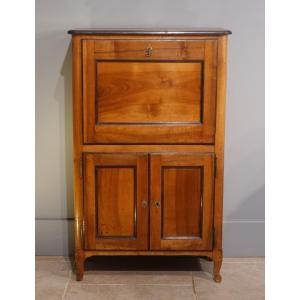The interior box is made up of six drawers and compartments of different sizes, arranged asymmetrically creating an original animation and revealing a keen sense of composition. A hiding place hidden under the central shelf reveals two small lockers. This hiding place is accessible by an undetectable system installed in a drawer.
Another distinctive sign of JF Hache production is the thickening of the flap at the level of the stop hinges in order to reinforce its solidity, of which our piece of furniture presents here an originality since it is only provided with one single hinge.
The assembly is also significant like the drawers mounted with rebates (the sides cover the bottom). This process avoided wear by allowing the drawer to slide over the entire bottom surface and not on the edge.
The use of fir for the frame and the nailed bottom boards are also part of the criteria common to the Hache workshops.
To complete this authenticity, we note in the upper right drawer the presence of the label XI dated June 1780.
The eldest of the three cabinetmaker sons of Pierre Hache, Jean-François is the most famous of the dynasty. He began working with his father, installed at Place Claveyson in Grenoble, then while continuing their collaboration, he established his own business in 1754 before taking over his father's workshop alone in 1770. He quickly achieved great notoriety and for more than thirty years old, he operated numerous workshops and stores in Grenoble. It was he who provided the furniture for most of the sumptuous Dauphiné residences and who was the private cabinetmaker of Duke Louis-Philippe of Orléans, governor of Dauphiné.
Dimensions
L. cm x H. cm x D. cm
France – Grenoble
Walnut accented with black
Original lock, key and hinge
Label No. XI (1777/1783)
(Ref: The Ax Genius – Pierre and Françoise Rouge)
18th century
















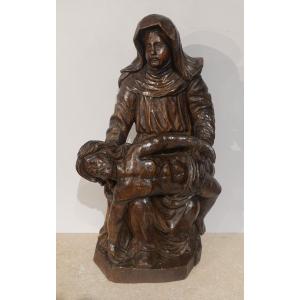


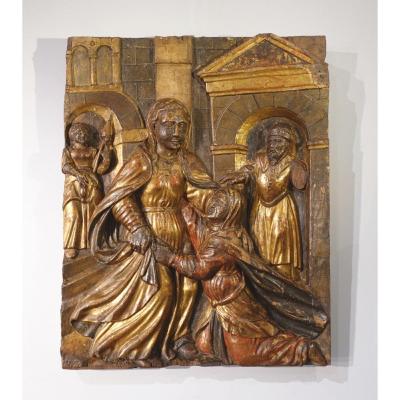

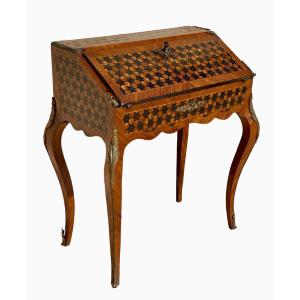
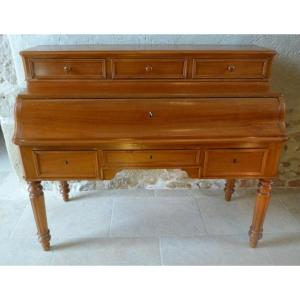

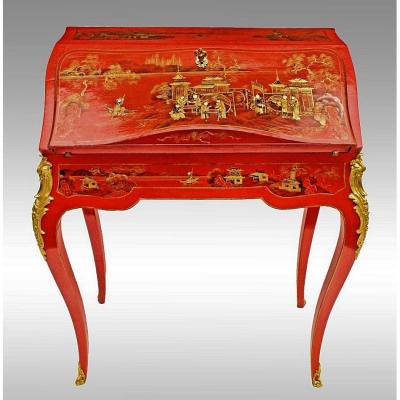





 Le Magazine de PROANTIC
Le Magazine de PROANTIC TRÉSORS Magazine
TRÉSORS Magazine Rivista Artiquariato
Rivista Artiquariato
